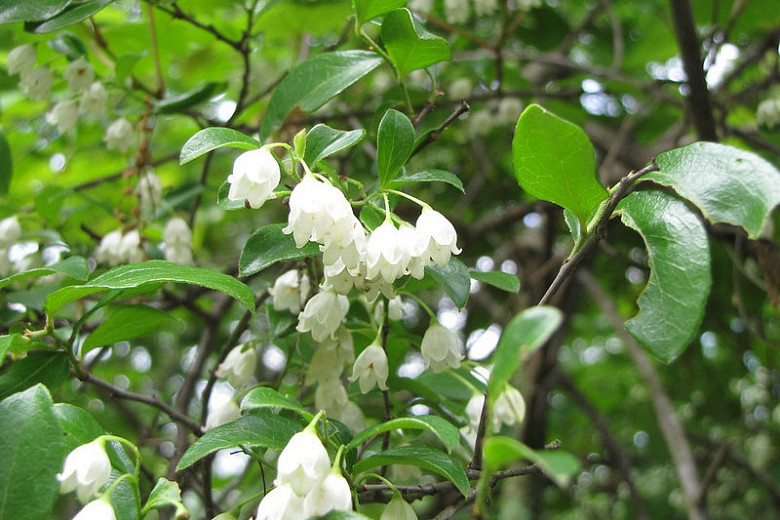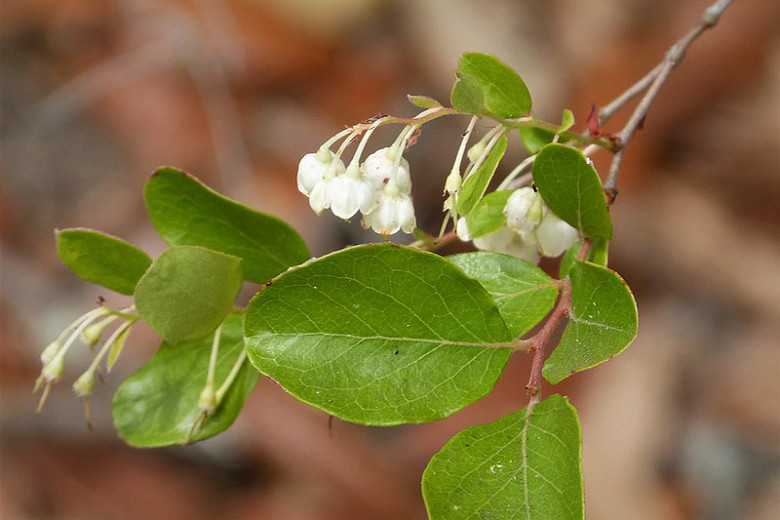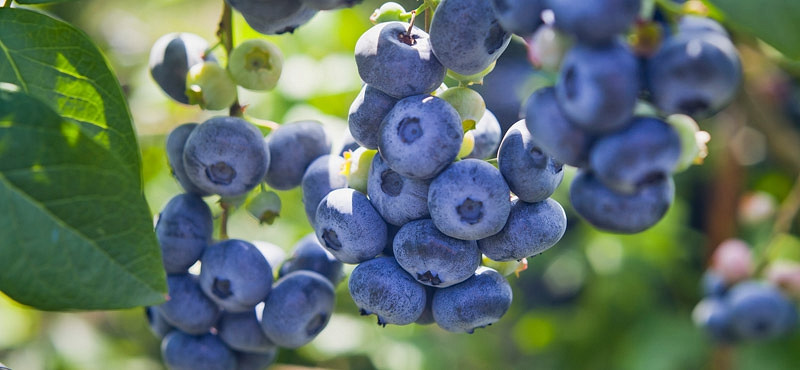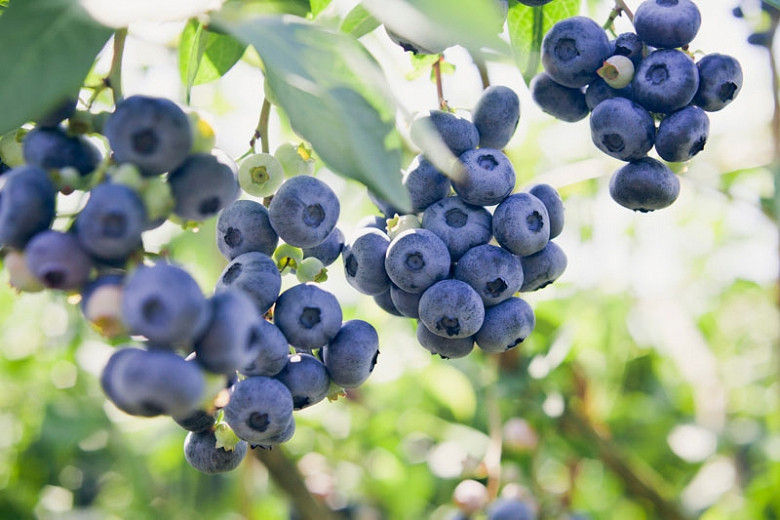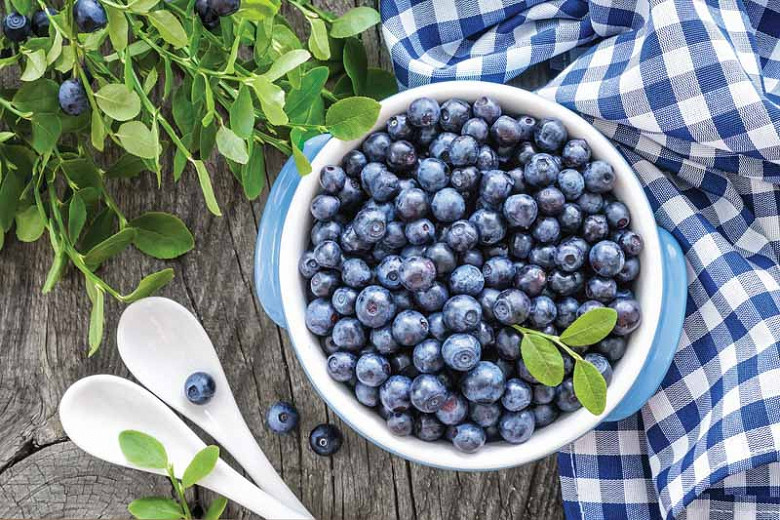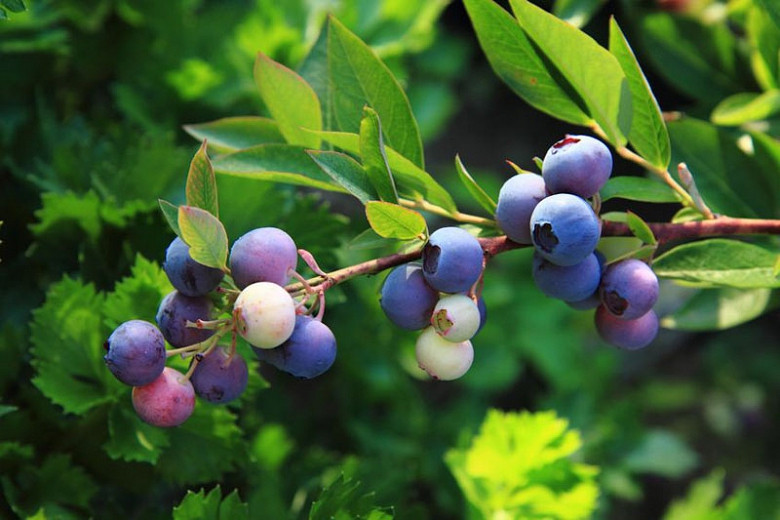Vaccinium arboreum (Sparkleberry)
The tallest of the genus of blueberries, Vaccinium arboreum (Sparkleberry) is a large, much-branched, deciduous to evergreen shrub or small tree adorned with a short trunk and an irregular crown of crooked branches. The foliage of leathery, glossy dark green leaves, 1-3 in. long (2-7 cm), turns brilliant red to crimson in the fall. Attractive racemes of urn-shaped, white to pinkish flowers hang under the foliage from early spring to early summer. Blooming for about 3 weeks, they attract butterflies and bees. The blossoms are followed by a profusion of inedible, persistent, black berries in the fall – a delight for songbirds, small mammals, ruffed grouse, wild turkeys and black bears. Each berry can contain up to 10 seeds which will reseed itself. The leaves may hang on through the winter if the plant is protected from gusty winds. The exfoliating bark reveals a lovely patchwork of grays, rich browns, oranges, and reddish-browns. The bark was formerly used in tanning leathers. Drought and heat tolerant, Sparkleberry is an attractive understory tree with gorgeous foliage, ornamental fruits, showy fall color. It is also a high-value wildlife plant. It is considered an important summer deer food in some areas, and many species of hares and rabbits also feed on the leaves and twigs.
- Grows up to 8-15 ft. tall (240-450 cm) and 4-10 ft. wide (120-300 cm).
- A full sun to part shade lover, this plant is best grown in dry to moist, sandy or rocky, well-drained, acidic soils. Drought tolerant once established.
- Great for shrub borders, foundation plantings, hedges, coastal gardens, butterfly gardens or woodland gardens. Combines well with Rhododendrons and Azaleas.
- No serious pest or disease issues. This plant is susceptible to chlorosis on high alkaline sites.
- Little pruning is needed to maintain a pretty looking shrub.
- Propagate by softwood cuttings taken in spring. Vaccinium will also root from hardwood cuttings of unbranched shoots of previous season. Seeds may need to be stratified.
- Native to the southeastern and south-central United States, from southern Virginia west to southeastern Nebraska, south to Florida and eastern Texas, and north to Illinois.
Requirements
| Hardiness | 7 – 9 |
|---|---|
| Plant Type | Shrubs, Trees |
| Plant Family | Vaccinium – Blueberries |
| Exposure | Full Sun, Partial Sun |
| Season of Interest | Spring (Early,Mid,Late)Summer (Early)Fall |
| Height | 8' – 15' (240cm – 4.5m) |
| Spread | 4' – 10' (120cm – 3m) |
| Spacing | 72″ – 144″ (180cm – 360cm) |
| Water Needs | Low, Average |
| Maintenance | Low |
| Soil Type | Loam, Sand |
| Soil pH | Acid, Neutral |
| Soil Drainage | Moist but Well-Drained, Well-Drained |
| Characteristics | Showy, Evergreen, Semi-Evergreen, Fruit & Berries |
| Native Plants | United States, Midwest, Illinois, Indiana, Kansas, Missouri, Rocky Mountains, Southeast, Alabama, Arkansas, Florida, Georgia, Kentucky, Louisiana, Mississippi, North Carolina, South Carolina, Tennessee, Virginia, Southwest, Oklahoma, Texas |
| Tolerance | Drought, Dry Soil |
| Attracts | Birds, Butterflies |
| Garden Uses | Hedges and Screens |
| Garden Styles | Coastal Garden, Informal and Cottage, Prairie and Meadow |

